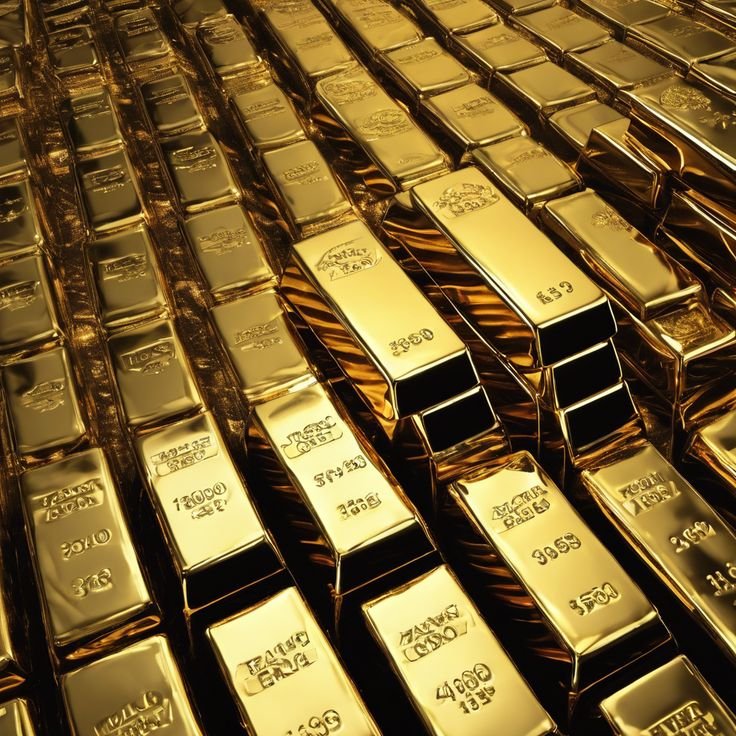As of April 2, 2025, gold prices in India have climbed to new all-time highs, fueled by a combination of global uncertainties, policy changes, and currency movements. The surge has caught the attention of investors, traders, and the general public alike, prompting discussions about the future of gold as a safe-haven asset in the current economic climate.
This article takes a deep dive into the current gold prices across major Indian cities, key factors behind the spike, and how the Indian market is responding.
Current Gold Prices in India
The following table displays the price of 22-carat and 24-carat gold in major Indian cities as of April 2, 2025:
| City | 22K Gold Price (per 10 grams) | 24K Gold Price (per 10 grams) |
|---|---|---|
| Delhi | ₹85,250 | ₹92,990 |
| Mumbai | ₹85,100 | ₹92,840 |
| Chennai | ₹85,100 | ₹92,840 |
| Kolkata | ₹85,100 | ₹92,840 |
| Bengaluru | ₹85,100 | ₹92,840 |
| Hyderabad | ₹85,100 | ₹92,840 |
| Ahmedabad | ₹85,150 | ₹92,890 |
| Lucknow | ₹85,250 | ₹92,990 |
The steady price range across cities highlights a national-level trend, with only marginal fluctuations due to local taxes and transport logistics.
Why Are Gold Prices So High Today?
Gold prices in India are deeply influenced by a range of international and domestic factors. The current record highs can be attributed to several pivotal developments:
1. Global Trade Tensions and Political Uncertainty
In recent weeks, global markets have been rattled by rising trade tensions, particularly between the United States and several major economies. Fresh tariffs announced by the U.S. have reignited fears of a full-blown trade war. As investors shy away from risky equities, gold has emerged as the asset of choice due to its stability during economic turbulence.
Political instability in parts of Europe, combined with continuing conflicts in the Middle East, has added to the global unease. Gold typically gains during times of uncertainty, and this pattern is holding true in early April 2025.
2. Weak Economic Indicators and Recession Fears
Multiple economic indicators are pointing to a potential slowdown in global growth. Manufacturing indices in several major economies have fallen below expectations, and consumer spending has shown signs of decline. The International Monetary Fund (IMF) recently revised its global growth forecast downward, increasing investor concern.
As a result, central banks are now expected to loosen monetary policy to stimulate economies. Historically, low interest rates make gold more attractive, since the opportunity cost of holding it drops. Investors seeking capital preservation have thus begun increasing their exposure to gold.
3. Indian Rupee Depreciation
On the domestic front, the Indian Rupee has weakened against the U.S. Dollar. Since gold is globally priced in dollars, a weaker rupee means that importing gold becomes more expensive for India, the world’s second-largest consumer of the metal.
This depreciation not only raises domestic prices but also boosts investor sentiment around gold as a protection against currency volatility. For Indian investors worried about inflation and the rupee’s performance, gold remains a preferred hedge.
4. Increased Central Bank Buying
Central banks across the globe, particularly in emerging markets, have increased their gold reserves in the past year. These institutions are diversifying their holdings away from traditional currencies like the dollar and euro. This steady demand from institutional buyers supports a strong floor under global gold prices.
Developments in the Indian Gold Market
1. Spike in Scrap Gold Supply
Due to the high market rates, there has been a noticeable surge in individuals selling their old gold jewelry and coins. Jewelers and pawnshops across India are reporting increased footfall from customers looking to cash in on their stored or unused gold assets.
This influx of recycled gold into the market has temporarily eased some pressure on imports, but the demand remains strong, especially ahead of the upcoming wedding season.
2. Changes in Government Policy
The Indian government, in a move to rationalize future obligations under its gold monetization scheme, has discontinued medium-term (5-7 years) and long-term (12-15 years) gold deposit options. Only short-term deposit schemes (1-3 years), which offer commercial viability to banks, are currently being continued.
This policy shift could indirectly influence market sentiment, as it reduces structured investment avenues for long-term gold holders and potentially increases private investment demand for physical gold and gold ETFs.
Investor Sentiment and Outlook
1. Bullish Momentum
Investor sentiment towards gold remains extremely bullish. Several financial analysts and wealth management firms have raised their price forecasts for gold in 2025. Some projections suggest that global gold prices could reach USD 3,250 per ounce by year-end if the current trends persist, particularly if the U.S. Federal Reserve signals further rate cuts.
In India, this could translate to gold crossing ₹95,000 per 10 grams, depending on currency performance and import duties.
2. Gold ETFs and Digital Gold See Uptick
With prices surging, more urban and tech-savvy investors are turning to Gold Exchange-Traded Funds (ETFs) and digital gold platforms to avoid the hassle of storing physical gold. Trading volumes for gold ETFs on Indian exchanges have jumped in the past two weeks, and fund inflows are at a 12-month high.
This digital shift is helping younger investors access the gold market without engaging in traditional forms of gold ownership like jewelry or bars.
3. Caution Among Retail Buyers
Despite bullish forecasts, some retail buyers, especially in rural areas, are holding off purchases in anticipation of a price correction. For many households, gold remains a sentimental and cultural asset rather than an investment, and affordability remains a key concern.
This cautious approach, however, may be overridden by seasonal demand during Akshaya Tritiya and the wedding season, which traditionally witness a spike in gold buying.
Conclusion
The price of gold in India on April 2, 2025, reflects a perfect storm of global and domestic factors — from geopolitical stress and currency depreciation to policy adjustments and changing investor behavior. As both a cultural cornerstone and a financial hedge, gold continues to play a central role in Indian households and portfolios.
For investors, the current environment underscores the importance of diversification and long-term planning. Whether through physical bullion, ETFs, or digital gold, strategic exposure to gold may prove to be a stabilizing force in portfolios amidst ongoing global volatility.
As always, investors are advised to stay informed, watch market cues, and consult financial advisors before making significant allocations, especially when markets are as heated as they are now.




